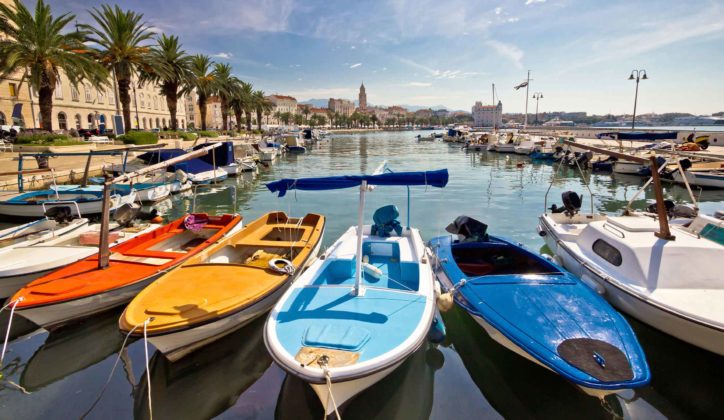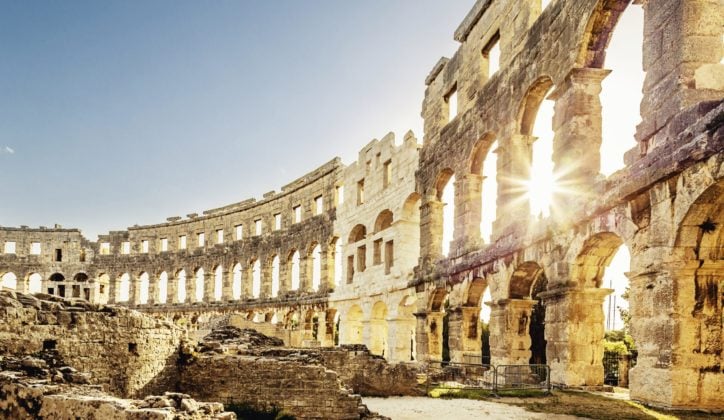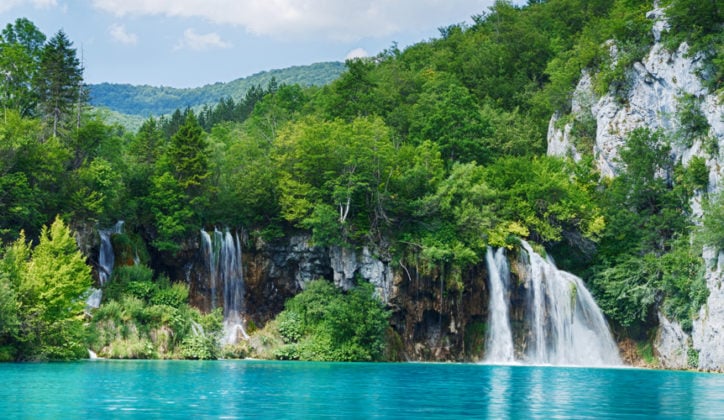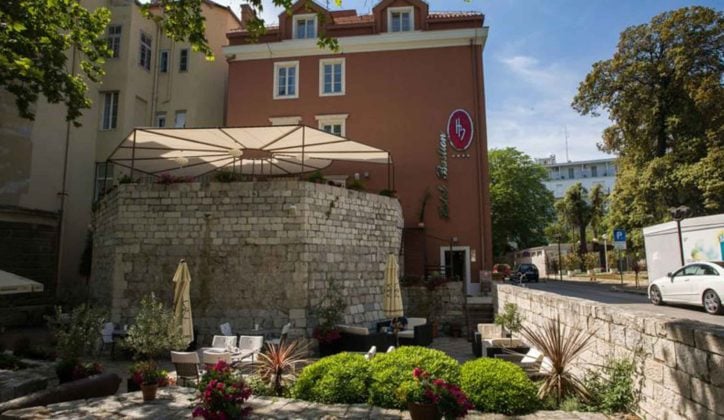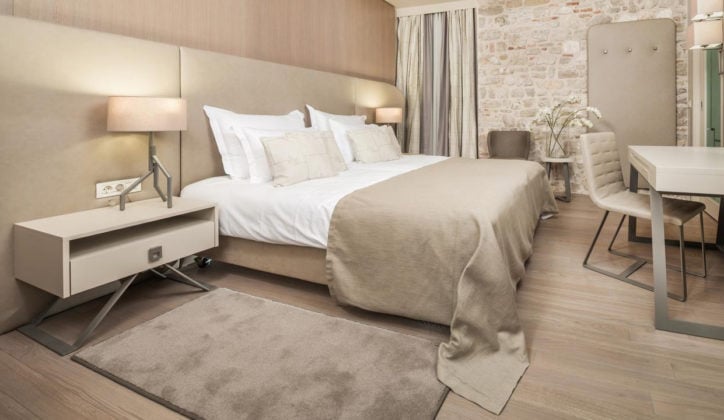Intriguingly unique, Zadar is a northern coastal hub with a very particular character. Although it’s definitely less busy than the tourist centres further south, it is one of Croatia‘s larger metropoles and a living, vibrant city. You’ll be greeted with a mix of ancient Roman relics, Hapsburg elegance, and clever, cutting edge art installations.
Set on its own small peninsula, the old city is especially charming. Wander through quiet streets of marble to discover Roman ruins, medieval churches, cafes, and fascinating museums all hemmed in by a great wall studded with elaborate gates and sturdy towers. The old city suffered terribly from the bombardments of the Second World War but several noteworthy archaeological treasures managed to survive such as a large Roman forum founded by the fabled Emperor Augustus, two squares adorned with lofty marble columns, a Roman tower, and the vestiges of an aqueduct. Zadar is also famous for its beautiful churches such as the monumental Church of St. Donatus and St. Anastasia’s Cathedral. Let your senses explore Zadar through the melodic sound installation of the Sea Organ and the clever Sun Salutation, a photovoltaic panel that glows to the rhythm of the waves once the sun sets.
Sprawl undisturbed on the pine-scented beaches of Diklo and Boric or hike and rock-climb in Zadar’s broad hinterland which manages to cram in three national parks between its crystal-clear coast and the soft outlines of Velebit mountains. Sail up the emerald Krka river through a pine-cloaked limestone gorge to Skradinski Buk in the Krka National Park for an unforgettable dip below the crescent of waterfalls. The ethereal lakes and waterfalls of the Plitvice National Park and Paklenica are also within easy striking distance as are the Kornati Islands National Park and the islands of Pag, Dugi Otok, Ugljan, Pasman, Molat, and Premuda which face back towards Zadar.
When to go
The best time to visit is between May and October.
What to do
- Listen to the mournful melodies of the waves at the Sea Organ installation
- Watch the Sun Salutation mimic the rhythm of the waves after sunset
- Walk around a Roman forum
- Visit the Franciscan Monastery and Church, the oldest Gothic church in Dalmatia
- Stroll through the Arsenal which once housed supplies for Venetian military ships and is now home to a cafe, art galleries, and shops
- See the intricately carved gold-plated sarcophagus in St. Simeon's Church
- Sunbath on beautiful beaches and swim in clear waters
- Use the city as a jumping off point for visiting remote islands
- Krka National Park is just over an hour's drive away
- Take a day trip to the Plitvice Lakes
Itineraries including Zadar
Top hotels in Zadar
Here are some of our travel designers' favourite options
















